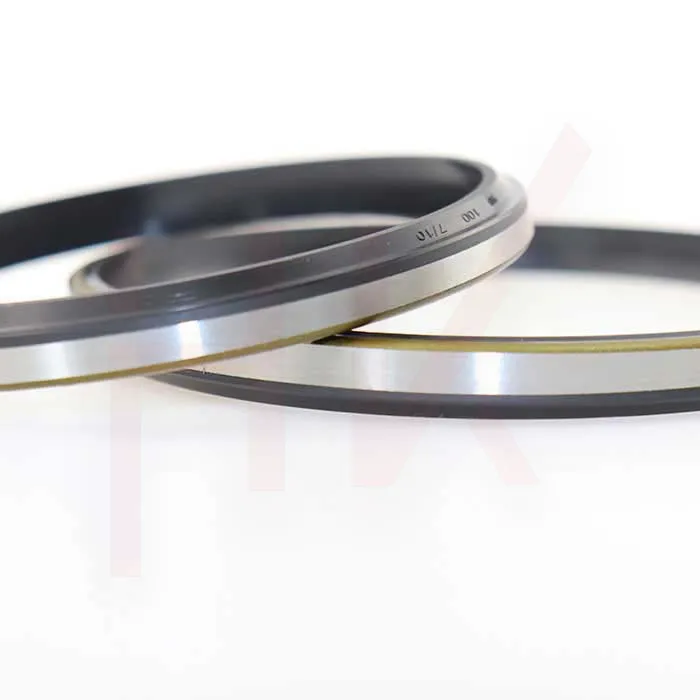Dec . 11, 2024 00:14 Back to list
Hydraulic Seal Repair Kit for Efficient Maintenance and Leak Prevention Solutions
Understanding Hydraulic Seal Repair Kits Essential Tools for Maintenance
Hydraulic systems are ubiquitous in various industries, powering machinery and equipment that require precise fluid control. From construction and manufacturing to agriculture and transportation, these systems play a crucial role in ensuring operational efficiency. However, like any mechanical system, hydraulic systems are prone to wear and tear, especially the seals. This leads us to the importance of hydraulic seal repair kits—a vital resource for maintaining the integrity of hydraulic systems.
What is a Hydraulic Seal Repair Kit?
A hydraulic seal repair kit is a collection of components designed to replace or repair damaged seals within hydraulic systems. These kits typically include an assortment of seals, O-rings, backup rings, and sometimes tools that facilitate the installation of these parts. They are essential for extending the life of hydraulic machinery and ensuring that systems function optimally.
Importance of Hydraulic Seals
Seals in hydraulic systems perform critical functions. They prevent leaks, control the flow of hydraulic fluid, and protect internal components from contaminants. When seals malfunction, which can occur due to wear, exposure to harsh chemicals, extreme temperatures, or improper installation, the consequences can be severe. Fluid leakage not only leads to a loss of hydraulic pressure, which can result in equipment failure, but it also poses safety hazards and environmental concerns.
Key Features of Hydraulic Seal Repair Kits
1. Variety of Seals A quality hydraulic seal repair kit includes a wide range of seals suitable for different applications. This versatility ensures that technicians can find the right seal for various models and types of equipment.
2. Durability The materials used in these kits, typically elastomers such as nitrile, fluorocarbon, and polyurethane, are selected for their durability and resistance to heat, fluids, and wear. This longevity is essential for effective performance in demanding environments.
3. Precision Engineering The seals in a repair kit are often manufactured with tight tolerances to ensure a proper fit. This precision reduces the likelihood of leaks and enhances the overall efficiency of the hydraulic system.
4. Ease of Use Many hydraulic seal repair kits come with step-by-step instructions for installation, making it easier for even those with limited technical skills to perform repairs effectively.
How to Choose the Right Hydraulic Seal Repair Kit
Selecting the appropriate hydraulic seal repair kit involves several considerations
hydraulic seal repair kit

1. Compatibility Ensure that the kit matches the specifications of your hydraulic system. Different systems may require unique seal sizes and materials.
2. Quality Opt for kits from reputable manufacturers that adhere to industry standards. High-quality seals may initially cost more, but their durability can lead to significant savings in maintenance over time.
3. Application Needs Consider the specific requirements of your hydraulic system, including the type of fluids used, operating temperatures, and pressures. This ensures that the seals will perform optimally under your system’s conditions.
4. Comprehensive Options Look for kits that provide a variety of components. A more comprehensive kit will allow for multiple repairs or cater to different parts of the hydraulic system.
The Repair Process
When it comes time to repair hydraulic seals, follow these general steps
1. Assessment Inspect the hydraulic system to identify leaks or damaged seals. Remove any materials obstructing access to the seals.
2. Disassembly Carefully disassemble the components of the hydraulic system, taking note of how parts fit together.
3. Replacement Remove the old seals and replace them with the new ones from the kit. Ensure the surface is clean and free of debris to promote a proper seal.
4. Reassembly Once new seals are in place, reassemble the hydraulic components. Be sure to tighten screws and bolts to the manufacturer’s specifications.
5. Testing After reassembly, test the system under normal operating conditions to ensure the repair was successful and no leaks are present.
Conclusion
Hydraulic seal repair kits are invaluable for anyone working with hydraulic systems, providing a practical solution to a common problem. By investing in a good repair kit and understanding the maintenance process, operators can significantly extend the life of their hydraulic machinery, improve efficiency, and reduce the likelihood of costly downtime. Proper maintenance not only enhances productivity but also ensures safety in the workplace, underlining the importance of these essential kits in industrial operations. Regular inspections and timely repairs will keep hydraulic systems running smoothly for years to come.
-
TCN Oil Seal Metal Ring Reinforcement for Heavy Machinery
NewsJul.25,2025
-
Rotary Lip Seal Spring-Loaded Design for High-Speed Applications
NewsJul.25,2025
-
Hydraulic Cylinder Seals Polyurethane Material for High-Impact Jobs
NewsJul.25,2025
-
High Pressure Oil Seal Polyurethane Coating Wear Resistance
NewsJul.25,2025
-
Dust Proof Seal Double Lip Design for Construction Equipment
NewsJul.25,2025
-
Hub Seal Polyurethane Wear Resistance in Agricultural Vehicles
NewsJul.25,2025
-
The Trans-formative Journey of Wheel Hub Oil Seals
NewsJun.06,2025
Products categories
















